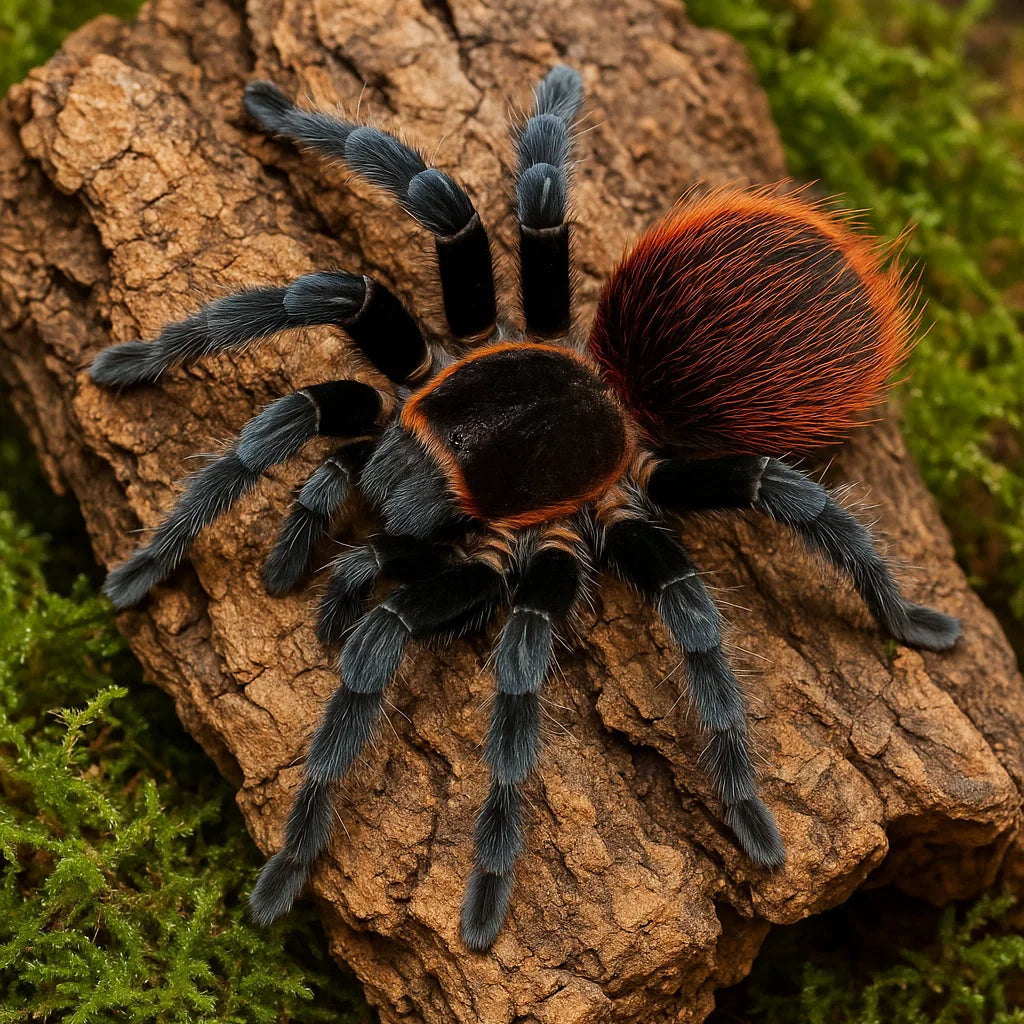Invert-Labs
Tliltocatl Vagans - Mexican Red Rump (Sling)
Tliltocatl Vagans - Mexican Red Rump (Sling)
Low stock: 2 left
Couldn't load pickup availability
SIP Code: IL-NW-TE-S-010
Scientific Name: Tliltocatl vagans (Ausserer, 1875)
Common Names: Mexican Red Rump Tarantula
Shipping Monday – Wednesday
Origin / Habitat
Native to southern Mexico, Belize, and Guatemala. Found in tropical and subtropical scrublands, forest edges, and grasslands where it digs deep burrows in compact soil. The natural environment alternates between humid wet seasons and dry, warm periods with good airflow.
Category
New World Terrestrial / Fossorial
Adult Size
Females: 5 – 6 in (12 – 15 cm) leg span
Males: smaller, longer-legged, shorter lifespan
Temperament / Behavior
Typically calm but may become defensive if cornered. Possesses strong urticating hairs and will flick when disturbed. Known for its jet-black body and vivid red abdominal setae, especially after a fresh molt. Burrow-oriented but frequently visible at the burrow entrance.
Recommended Enclosure
Terrestrial setup with 5 – 6 in of compact, slightly moist substrate for burrowing. Provide a cork bark hide and a shallow water dish. Maintain moderate ventilation and avoid overly wet conditions.
Temperature & Humidity
Temperature: 74 – 80 °F (23 – 27 °C)
Humidity: 60 – 70 % RH
Ventilation: Moderate — ensure good airflow while maintaining humidity balance
Diet / Feeding Frequency
Slings: Micro crickets or fruit flies 2–3× per week
Juveniles: Small crickets or roach nymphs twice weekly
Adults: Medium crickets or dubia roaches once weekly
Remove uneaten prey within 24 hours.
Growth Rate & Lifespan
Moderate growth. Females mature in 3 – 4 years and live 15 – 20 years; males typically live 4 – 5 years post-maturity.
Handling / Caution
Generally tolerant but best left unhandled. May flick hairs readily, causing irritation. Use soft tools for enclosure work and move slowly to reduce stress.
Invert-Labs – Summary
The Mexican Red Rump is a hardy, attractive terrestrial tarantula ideal for beginners and intermediate keepers alike. Adaptable to a range of environments, it is easy to maintain and long-lived. Its bold coloration, calm temperament, and simple care requirements make it one of the most popular New World species in the hobby.
Care Snapshot
Difficulty: Beginner
Temperament: Calm / Defensive when provoked
Enclosure: Terrestrial / Fossorial
Temperature: 74 – 80 °F
Humidity: 60 – 70 %
Growth / Lifespan: Moderate | 15 – 20 yrs (female)
Beginner Guidance
An excellent first tarantula. Keep substrate slightly moist but never wet, provide a hide, and avoid frequent disturbance. Stable conditions and calm handling protocols will ensure long-term success.
Share




